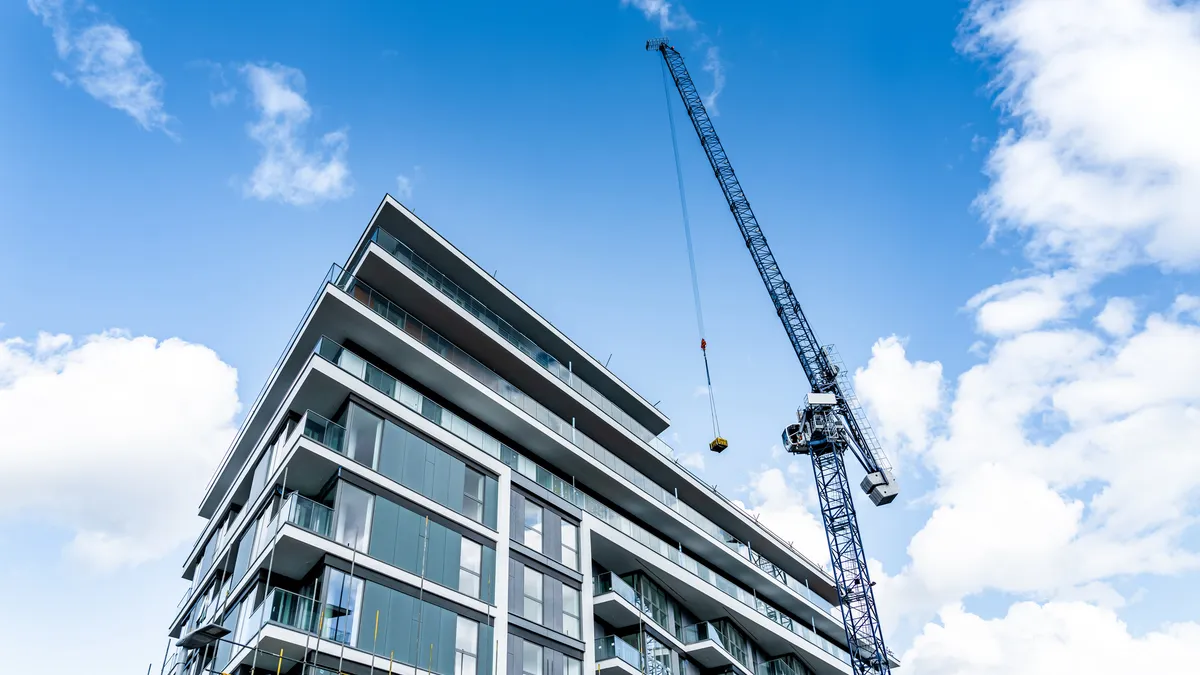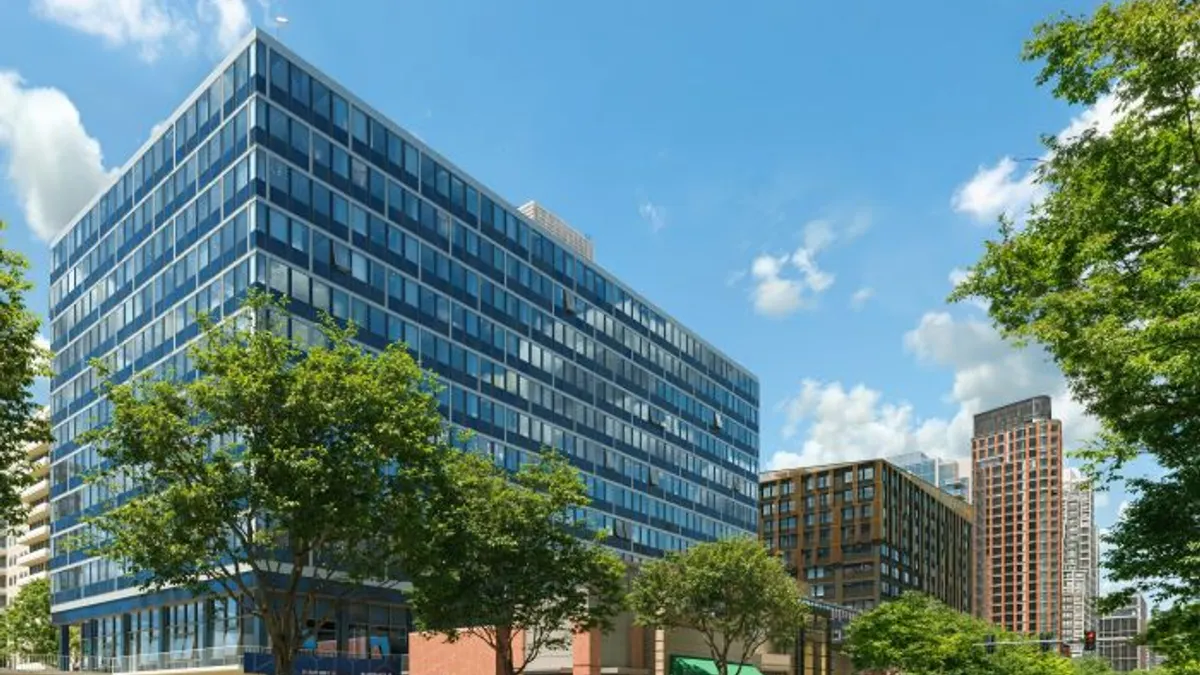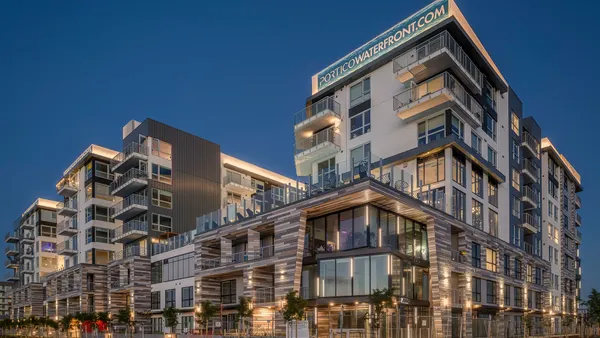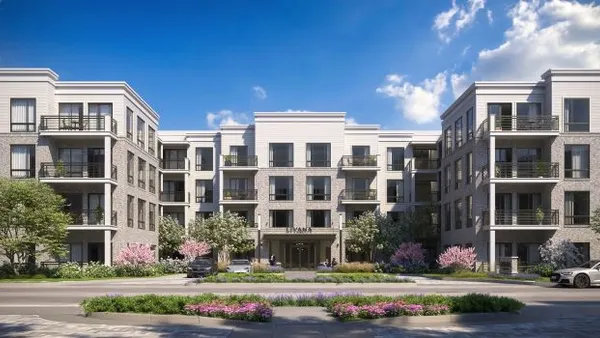Dive Brief:
- The Internal Revenue Service released new guidance last week for residential projects using the Section 45L tax credit for energy-efficient new construction. Properties obtaining this credit must meet Energy Star or Zero Energy Ready Home standards.
- A presenter at Greenbuild 2023 provided additional information on how multifamily projects can meet Section 45L requirements in a session at the conference in Washington, D.C., last week. Where previously the tax credit only covered single-family projects and multifamily buildings three stories tall or shorter, the updated credit, revised under the Inflation Reduction Act, covers all multifamily buildings regardless of size, according to Jamie Van Mourik, science, policy and technology fellow at the Department of Energy.
- The base 45L tax credit for multifamily projects meeting Energy Star Multifamily New Construction Standards is $500 per unit, while ZERH buildings are eligible for up to $1,000 per unit. Projects meeting prevailing wage requirements can receive credits of up to $2,500 or $5,000 per unit, respectively, according to the IRS guidance.
Dive Insight:
The IRS Notice 2023-65, which provides guidance for the updated tax credit, does not provide any guidance related to LEED certification for Section 45L. However, at the Greenbuild information session, Mourik provided examples of LEED versions that can qualify for Section 45L, including LEED v4 Homes Multifamily Lowrise and Multifamily Midrise.
Mourik also noted that specific editions of Energy Star and ZERH programs can also be considered alternative paths to compliance with LEED. This includes the DOE’s ZERH MF v2, which will be finalized later this year.
The credit also does not include a direct pay or transfer provision for government or nonprofit use. However, it may be used alongside the Low Income Housing Tax Credit for privately developed affordable housing, according to IRS guidance. The Section 48 Clean Electricity Investment and Section 30C EV Charging credits may also be used alongside 45L.
Goals and incentives
The DOE’s goal for future residential energy usage, according to Mourik, is to achieve all low-/no-carbon emissions in new construction homes by 2035 and existing homes by 2050.
In order to make progress toward this vision, the DOE aims to accelerate the adoption of technologies and strategies that can reduce or eliminate carbon emissions. This, according to Mourik, means ensuring that energy-efficient and low-carbon options are affordable and accessible to developers.
The strategy’s building blocks include the ZERH program, which creates guidelines for homes with low or no carbon emission; non-carbon energy sources, such as nuclear and solar; and expanded infrastructure.
The Greenbuild conference is owned by Informa, parent company of Industry Dive.









